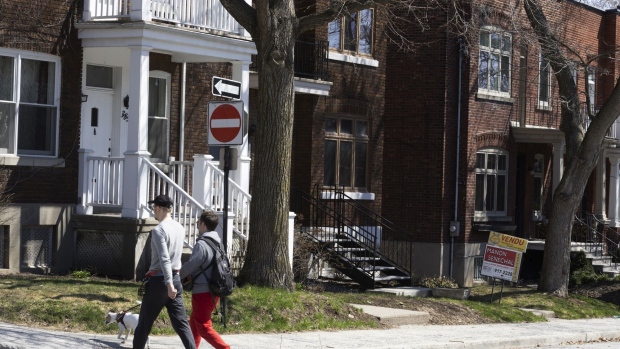Dec 13, 2023
Canada Debt Service Costs Hit Record High on Interest Rate Hikes
, Bloomberg News

(Bloomberg) -- Canadians are spending more of their disposable income to pay down debt than ever recorded, as mortgage interest payments have nearly doubled since the Bank of Canada began hiking interest rates in early 2022.
The household debt service ratio, which tracks the total payments — principal and interest — that Canadians are required to make as a proportion of their disposable income, reached 15.22% in the third quarter, the highest since data started being collected in 1990.
Statistics Canada released the figure in national balance sheet data on Wednesday. The report provides insight into the financial health of Canadians, who are the most indebted in the Group of Seven due to the high cost of housing.
Household wealth also slumped in the third quarter, as those higher debt costs were accompanied by weaker financial and housing markets. Household net worth — the value of all assets minus all liabilities — shrank 1.8% to C$16.2 trillion ($11.9 trillion), the statistics agency said.
Still, the agency said the quarterly increase in household debt marked the slowest year-over-year expansion since 1990, suggesting that Canadians are putting the brakes on mortgage borrowing in the face of high interest rates.
Credit market debt as a proportion of disposable income also fell slightly to 181.6% in the third quarter from 181.9% in the second quarter. In other words, there was $1.82 in credit market debt for every dollar of household disposable income in the third quarter.
Since the Bank of Canada started raising interest rates in the first quarter of 2022, the amount of total mortgage interest payments has increased 89.6%, the statistics agency said, leading to a 16.8% drop in principal paid. The central bank held its benchmark rate at 5% earlier this month.
--With assistance from Erik Hertzberg.
©2023 Bloomberg L.P.






